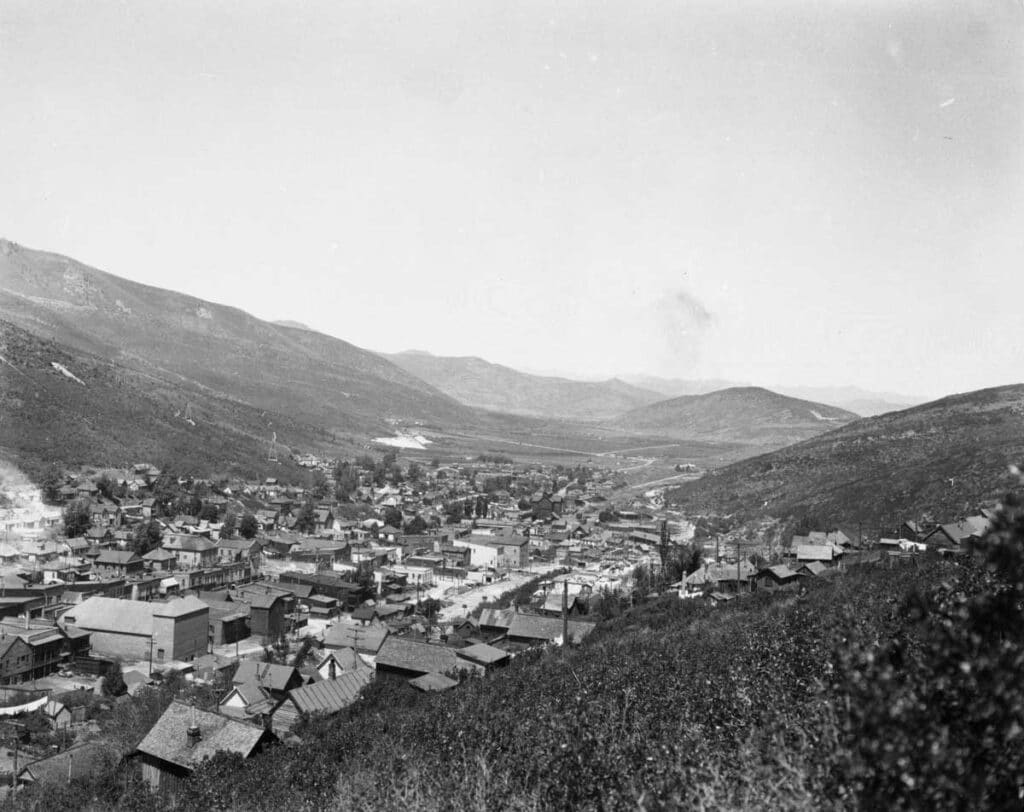The following is the second article in a series on the idea to build a ski resort in Park City.
By 1935 Averell Harriman, chairman of the Union Pacific Railroad, was absolutely convinced that skiing could become a viable business in North America. Despite a painful depression, the fact that 8,600 Americans booked European ski extravaganzas in the 1934-35 ski season was confirmation enough. The average duration for these trips: one month, including ocean transit.
Clearly these people were the ultra-wealthy. Averell wanted their money. He intended to leverage the assets of both the Union Pacific Railroad and Brown, Brown, & Harriman to build a grand destination ski resort in North America. When complete, the plan went, the new resort would rival the best European resorts and would certainly be more convenient.
The Union Pacific was one of the largest and most profitable railroads in America. Brown, Brown, & Harriman was the largest private bank in the US. Averell was Chairman of both companies; The engineering and financial assets required to construct a luxury destination ski resort were within his domain.
Averell had three immediate challenges: he did not ski, he was clueless about building a ski resort, and he had no idea where to build it. No problem. He cabled a former bank colleague with experience consulting for European ski resorts – Count Felix von Schaffgotsch (a member of the Austrian Royal Family). They reached an agreement in which Averell would cover all expenses (first class of course) and the Count would donate his time. Von Schaffgotsch sailed for New York City, arriving in early November 1935. Averell was impatient. He planned to open the continent’s first destination ski resort the next year on December 21, 1936, in time to celebrate the winter solstice.

Credit: Park City Historical Society & Museum, Pop Jenks Collection
Averell instructed the Count to locate the perfect location for this endeavor – emphasis on ‘perfect.’ He expected a decision on the location no later than the end of January. Together they defined the site selection criteria as having mountains (but not too steep), reliable snow, a dry climate, abundant sunshine, a remote location, and being close to a main line of the Union Pacific Railroad.
They decided the Count would explore six states in pursuit of Averell’s vision: Washington, Oregon, California, Idaho, Utah, and Colorado. The Count’s field research would include Mt. Rainier, Mt. Hood, Lake Tahoe, Alta, Brighton, Park City, Victor, Jackson, Ketchum, and Aspen. William Hynes (Union Pacific Manager in charge of freight and passenger operations for the western region) and his staff would choreograph this 7,000-mile, six-week marathon. The Count would travel to the farthest locations west then work is way back east. At each location the local Union Pacific station agent and prominent officials would help make the necessary arrangements.
A visit to the Wasatch Back was scheduled for the week of January 6, 1936. Internationally renowned ski jumper Alf Engen and a fellow Austrian, Fred Speyer, would introduce von Schaffgotsch to Alta and Brighton. Mel Fletcher would do the honors for Park City.
Von Schaffgotsch departed New York City in the comfort of a Pullman Sleeper bound for Chicago for the first segment of this quest. Mel Fletcher, just a junior at Park City High School, anticipated his arrival in approximately two months. Regarding the future of skiing in America, they shared a common vision. Destiny decided that they would meet.
Park City Museum and its Friends of Ski Mountain Mining History are hosting a lecture titled “Shiny Rock to Silver Bars” given by Donovan Symonds on July 12 from 5-6 p.m. at their Education and Collections Center located at 2079 Sidewinder Drive.